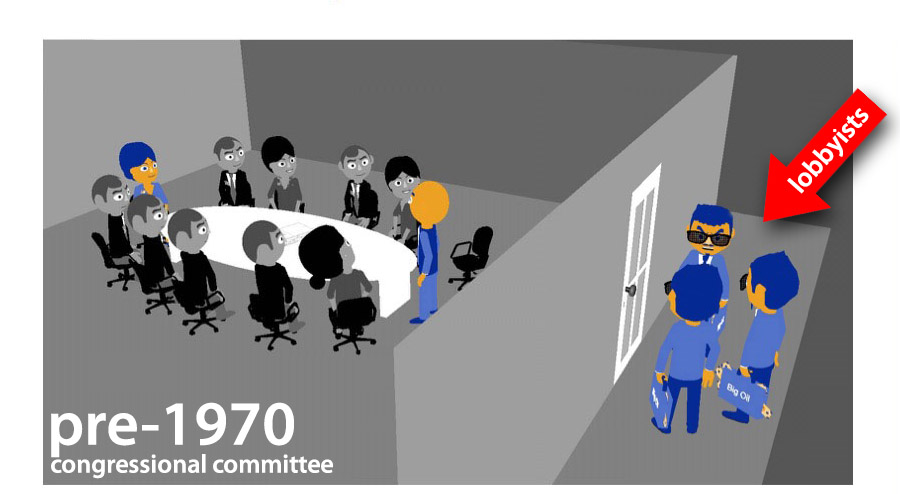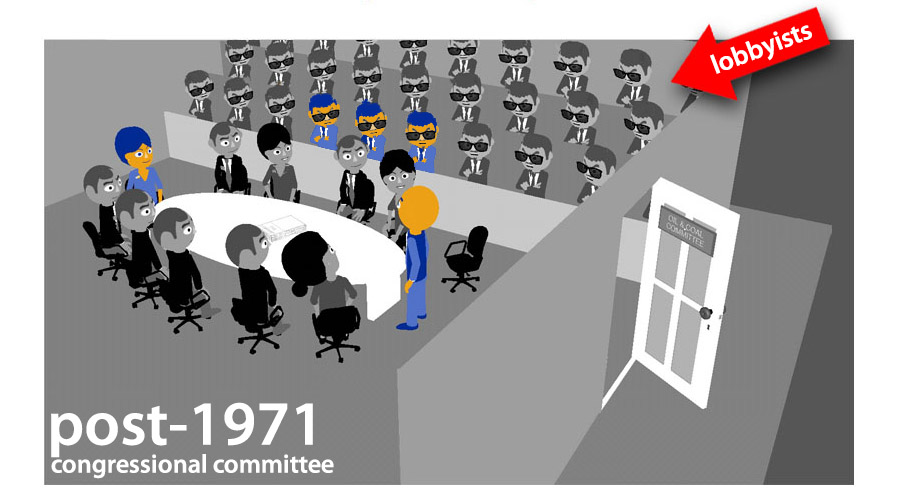The Transparency Problem(s)
How sunshine benefits the powerful
On January 3rd, 1971, the US Congress switched from being one of the most closed institutions in history to one of the most open. Congressional voting and meetings that were once secret were thrust open in a wave of ‘democratic’ transparency. No evidence has yet been offered to support this change. Conversely, there is now ample evidence to suggest that these actions have led to two pernicious and equally debilitating problems resulting in a Congress significantly more susceptible to the influence of powerful outsiders and fraught with ferocious partisanship.
By James D’Angelo, David King & Brent Ranalli – October 23, 2021
There continues to be a dearth of studies empirically testing the theoretical claims of transparency advocates, even as legislation and institutional support for their case accumulates exponentially.Amitai Etzioni 2010 – Is Transparency the Best Disinfectant?
There isn’t much hard evidence that transparency reliably improves real-world decision-making or makes the public happier, and some evidence points to ill effects...[and] reformers’ dogmatic and often moralistic commitment to them needs a reality check.Jonathan Rauch 2016 – Back Rooms Strengthen Democracy
The enactment of the ‘sunshine’ laws, which had opened up committee legislative drafting sessions to the public in order to dilute the power of business lobbyists, had precisely the opposite effect.Kenneth Vogel 1989 – The Political Power of Business
The more open a system becomes, the more easily it can be penetrated by money, lobbyists and fanatics...Congress can now be monitored and influenced as never before. As a result, lobbies, which do most of the monitoring and influencing, have gained power.Fareed Zakaria 2003 – Future of Freedom
Several important steps toward legislative transparency in the 1970s have fundamentally altered how the U.S. Congress and state legislatures operate. Some of these reforms, like mandating recorded votes in the Committee of the Whole and open committee meetings, were widely supported by the press and members at the time. And, despite a lack of supporting evidence, similar reforms were quickly mirrored in other legislatures. We explore the origins and pitfalls of these reforms highlighted by the 1970 Legislative Reorganization Act.
From the very beginning, these open meetings and public roll call votes became contentious proving grounds for ideological purity, party alignment and fidelity to special interests. We elaborate on theories of representation to investigate how and why behaviors change when different types of monitoring are in place. Consistent with the theory, increases in transparency were followed by increased narrow-interest lobbying and wasteful and pernicious legislative gamesmanship (via a process we call weaponized transparency). And the combination of these two problems led to both increased government capture and a soaring rise in partisanship.
Today, hundreds of scholars agree there are important and divisive problems with legislative transparency. Our Foreign Affairs paper covering these issues is available here. Recently Dr. Frances Lee (Princeton) presented this work in Congress.
The Lobbyists Come Inside
It must be recognized that there is no way to open up the legislative process to the people without also opening it up to lobbyists and interest groups.Joseph Bessette 1994 - Mild Voice of Reason
The 1970 Legislative Reorganization Act (LRA) thrust transparency on Congress before the terms “transparency” and “accountability” were even in vogue. Coming into effect with the 92nd Congress in January of 1971, the LRA fundamentally changed the way federal law is drafted. Before the reform, the vast majority of legislation (including the Constitution, Bill of Rights, Civil Rights Act, and the Environmental Protection Act) was drafted, debated and amended in committees behind closed doors.
For nearly 200 years, these committees weren’t just closed to the public, they also denied access to the President, the press, foreign bankers, oil company lobbyists, other members of Congress, etc. This secrecy didn’t just apply to the markup sessions; it also applied to all voting in committee. To this day we don’t know how JFK, LBJ or James Madison voted on a single amendment when they served as members of Congress.
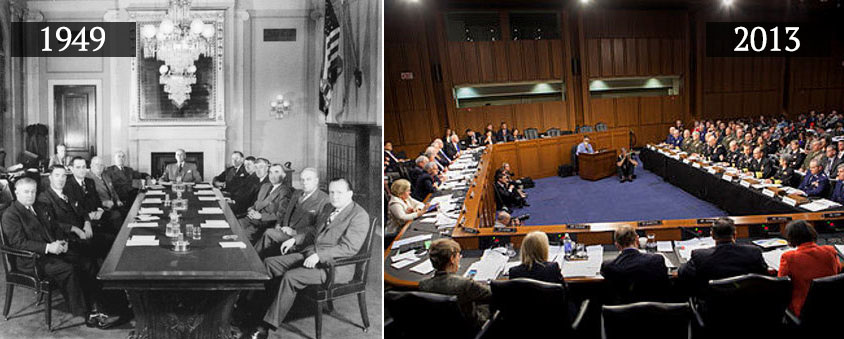
The opening of congressional committees

The opening of congressional committees
But, the 1970 LRA (signed by Nixon) quietly eliminated this protective secrecy overnight. Immediately, everyone on earth had access to nearly every amendment and vote “from hopper to floor.” As a result, the lobbyists (previously excluded from participation) stormed inside and have since become powerful and imposing mainstays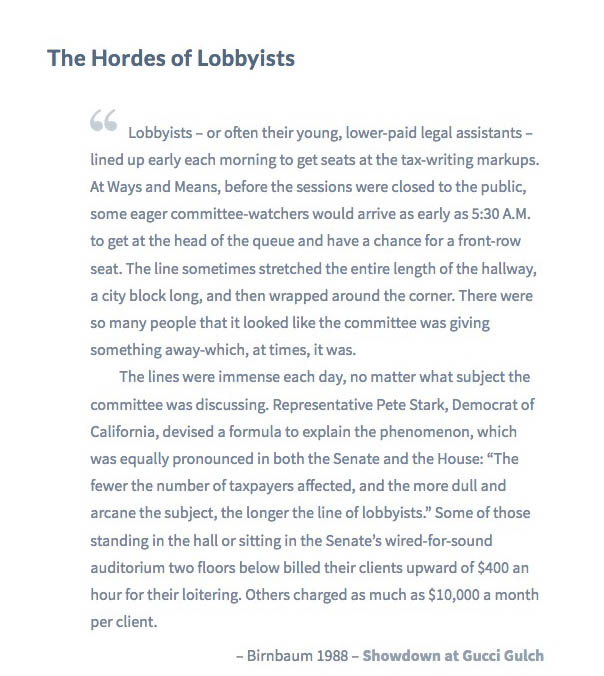 during the writing, drafting and editing of legislation. This has been a major coup for interest groups. Since the time of Thomas Jefferson, lobbyists were forced to wait outside – in (as their name suggests) the lobby.
during the writing, drafting and editing of legislation. This has been a major coup for interest groups. Since the time of Thomas Jefferson, lobbyists were forced to wait outside – in (as their name suggests) the lobby.
Had the deliberations been open while going on, the clamors of faction (special interests) would have prevented any satisfactory result.Alexander Hamilton 1792 – History of the Republic
Clearly then, before 1970, without any access to information, lobbying was a difficult business. The few existing lobbyists (who struggled just to get by) 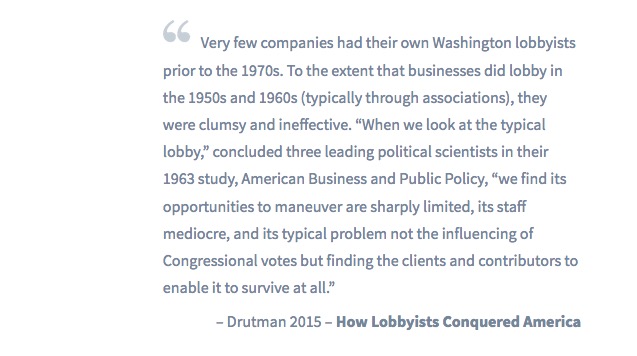 were separated from the drafting of legislation by guards and heavy wooden doors. As a result, they were often entirely unable to ferret out the legislators who chopped their amendments or edited their legislation – information that is essential to a successful lobbyist. But with the passage of the 1970 LRA, this crucial information was served up on a platter. As a result, powerful pressure groups could suddenly hold individual legislators directly accountable by offering rewards (of campaign finance) or punishments (via brubery, negative advertising, challneger funding, push polls, etc). As Fareed Zakaria says, referencing the 1970s laws specifically, “Once lobbyists knew your every vote, they used it as ammunition.”
were separated from the drafting of legislation by guards and heavy wooden doors. As a result, they were often entirely unable to ferret out the legislators who chopped their amendments or edited their legislation – information that is essential to a successful lobbyist. But with the passage of the 1970 LRA, this crucial information was served up on a platter. As a result, powerful pressure groups could suddenly hold individual legislators directly accountable by offering rewards (of campaign finance) or punishments (via brubery, negative advertising, challneger funding, push polls, etc). As Fareed Zakaria says, referencing the 1970s laws specifically, “Once lobbyists knew your every vote, they used it as ammunition.”
Democracy in Chaos
How and why money should be so powerful in a democracy where each person has a vote – and most voters, by definition, are not in the 1 percent – has remained a mystery.Joseph Stiglitz 2012 – The Price of Inequality
Sunshine, therefore, has distorted the dynamics between legislator and lobbyist. And because constituentsdo not monitor Congressconstituents do not monitor Congress, this has resulted in an enormous gain in power for special interests - which has resulted in a soaring rise of chaos and inequality. Similar power grabs made by other influential groups (i.e. the President and powerful foreign entities) have led to a free-fall of the democratic process. The result is that Congress has flipped from being the people’s representative in the 1970s to today’s fearful corporate handmaiden. We see this both empirically (numerous important metrics have spiraled since the opening up of Congress) as well as theoretically. And these concepts are the focus of a number of our papers and pages on this site as well as two recent talks at Harvard and the League of Women Voters.
Further, we have discovered a number of important pieces to the puzzle, whose logic is diametrically opposed to that of common conception. We find that legislators are not easily bribed, secrecy is important at preventing corruption, an engaged citizenry does not necessarily improve democratic outcomes, and the process of accountability does not work at all as commonly thought. We present these ideas on our page the Seven Deadly Myths of Transparency. Also, despite the counterintuitive nature of our work, we have found broad support for our ideas in the literature.

Problem 2: The Chaos of Weaponized Transparency

Problem 1: The Lobbyists Come Inside



